Aristarchus
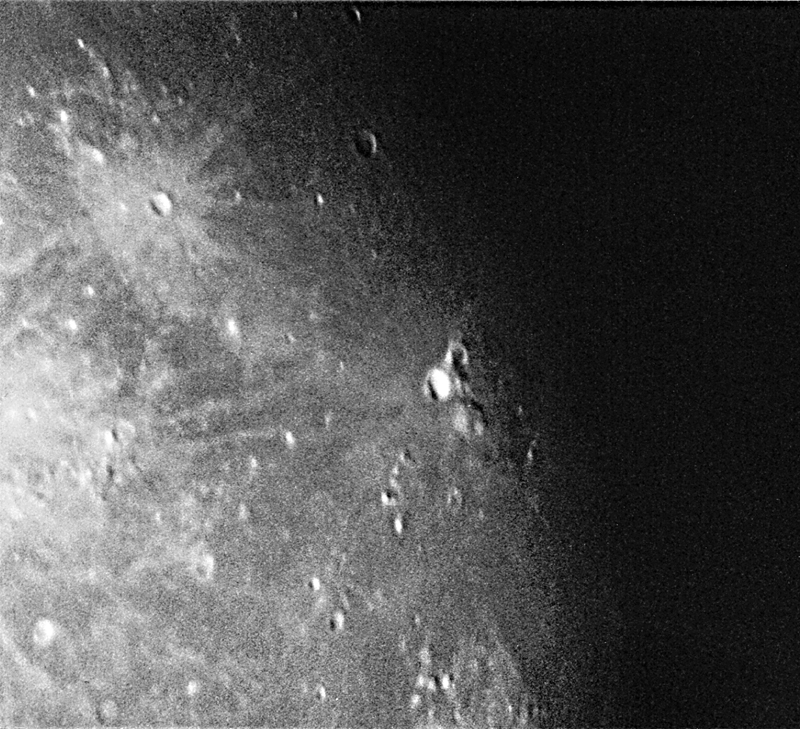
1/250 second exposure, Fuji Super HG II 400 film.
300mm f/6 newtonian at prime focus.
Situated near the north-eastern limb of the Moon is one of the brightest features on the Moon, the crater Aristarchus. Best viewed about 3 days before full moon, this region is very interesting with the very bright Aristarchus, the darker Schroter alongside it, and the sinuous Schroter's valley winding its way down the hillside to the mare below.
In the image above, the bright crater with the prominent ray system above and left of Aristarchus is Kepler, while at the left-hand edge the rays system from the crater Copernicus can be seen.
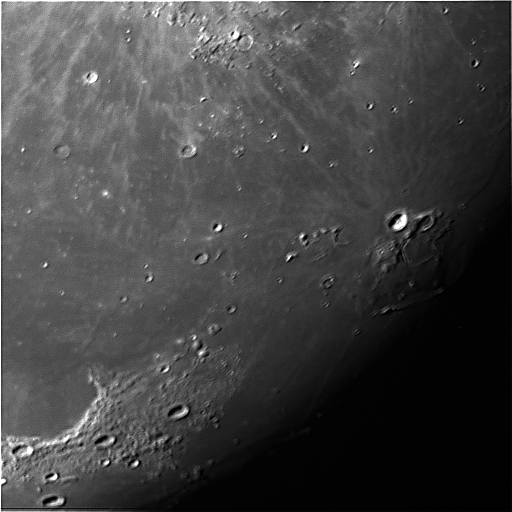
0.002 seconds exposure, SBIG ST-9E CCD
16" f/10 schmidt-cassegrain at prime focus.
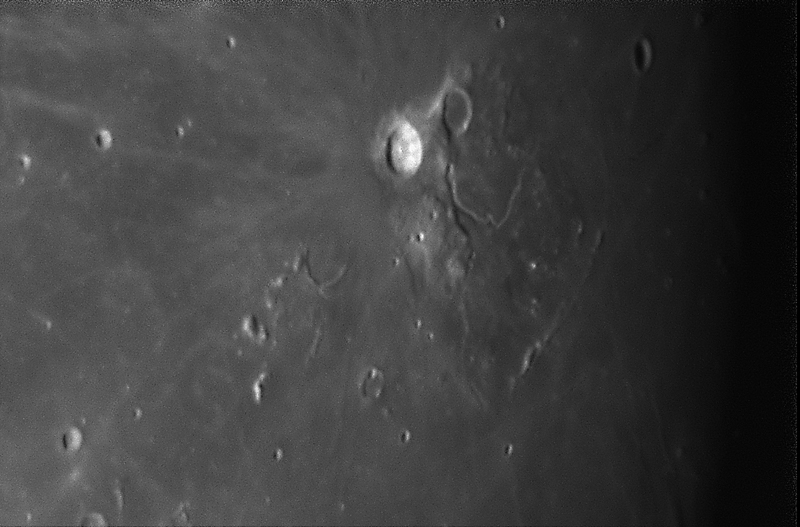
Combination of 10, 0.05 second images using an H-alpha filter.
SBIG ST-8XE CCD. 16" f/10 schmidt-cassegrain telescope plus a 2x barlow lens.
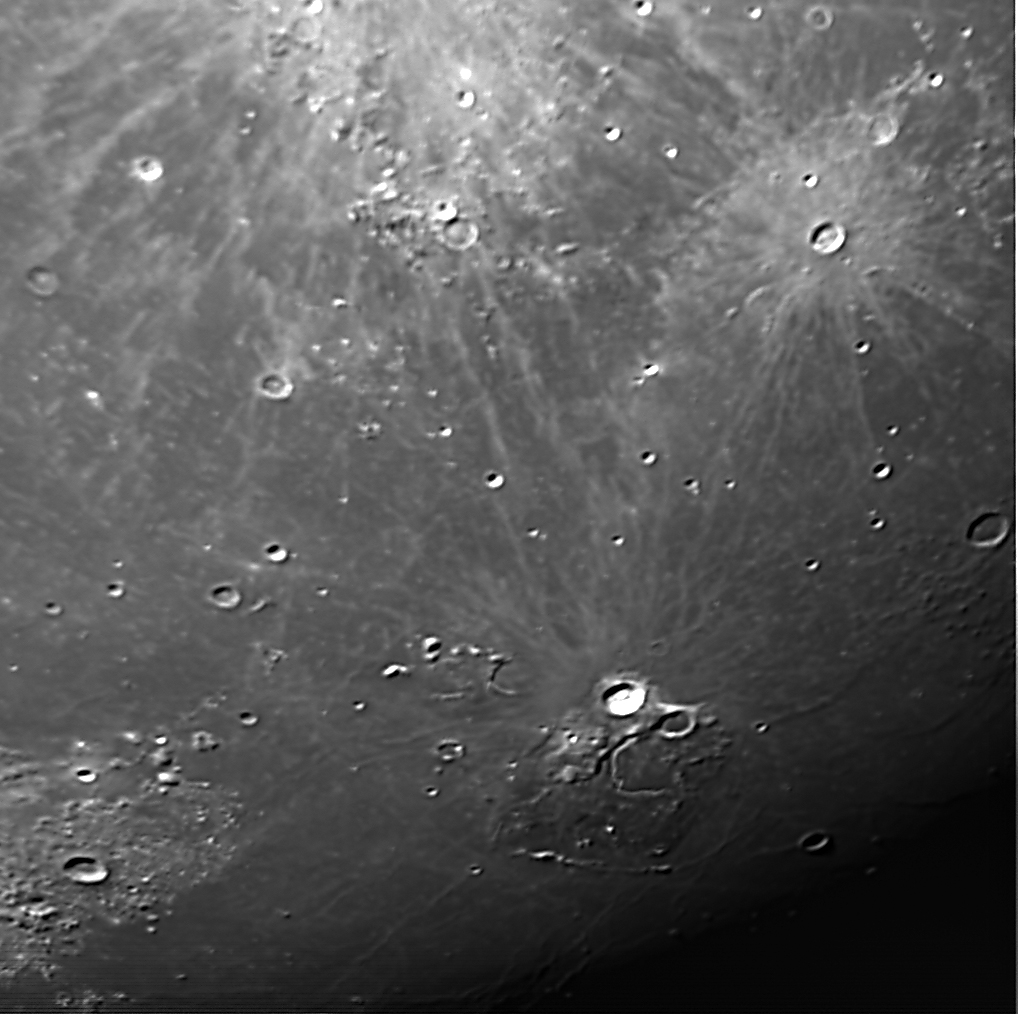
Combination of 20, 0.002 second images using an H-alpha filter.
SBIG STL-1001E CCD. 16" f/10 schmidt-cassegrain telescope plus a 2x barlow lens.
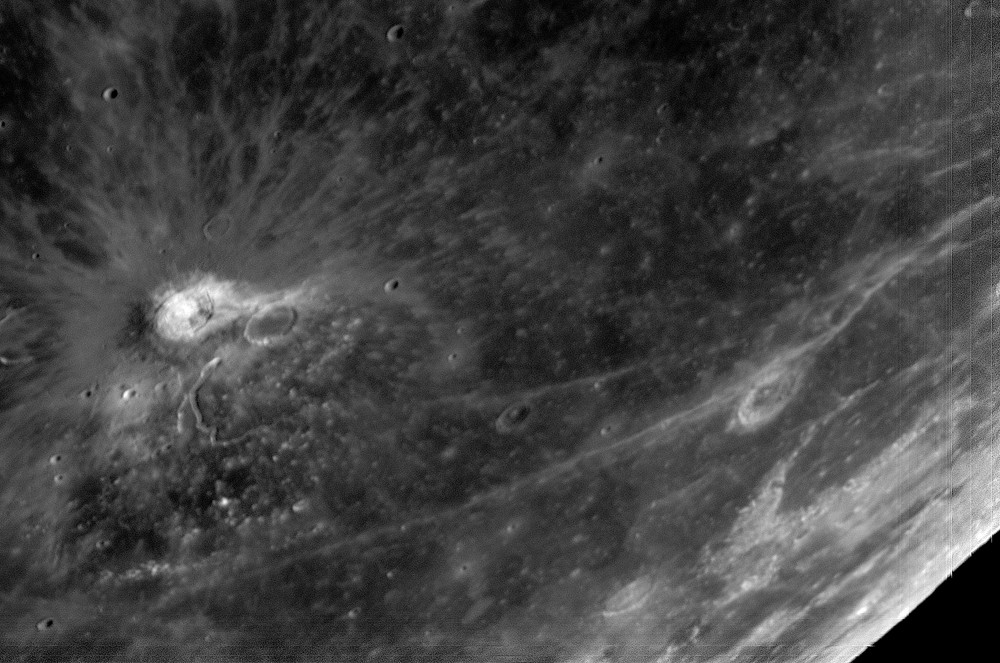
Combination of 20, 0.02 second exposures with an H-alpha filter. SBIG ST-8XE CCD.
20" f/6.8 cassegrain with a 2x barlow lens.
The image below was taken one day after the above image. Some changes in the appearence of the features can be seen as the Sun starts to set.
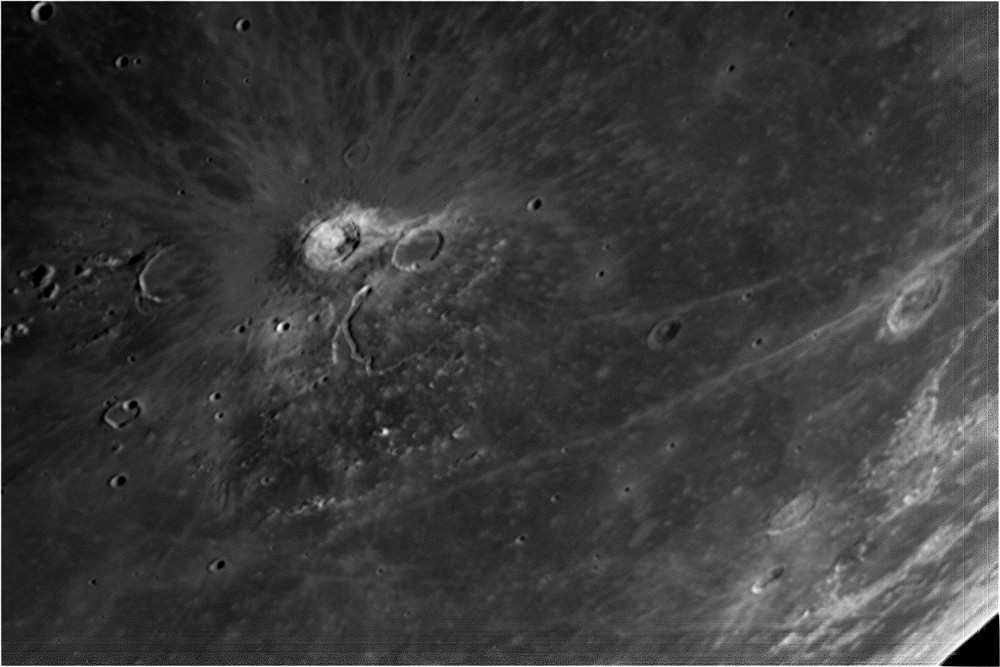
Combination of 20, 0.02 second exposures with an H-alpha filter. SBIG ST-8XE CCD.
20" f/6.8 cassegrain with a 2x barlow lens.
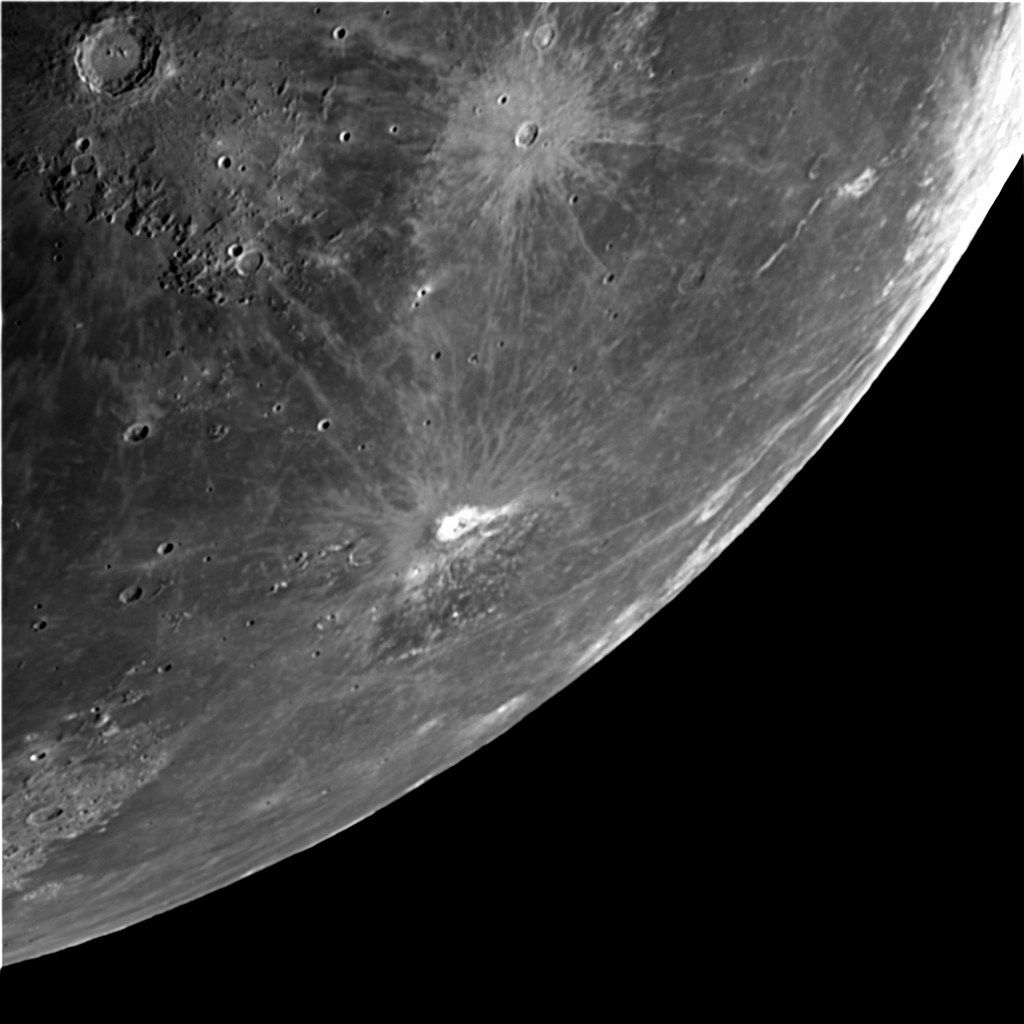
Combination of 20, 0.02 second exposures with an H-alpha filter. SBIG ST-8XE CCD.
20" f/6.8 cassegrain at prime focus.
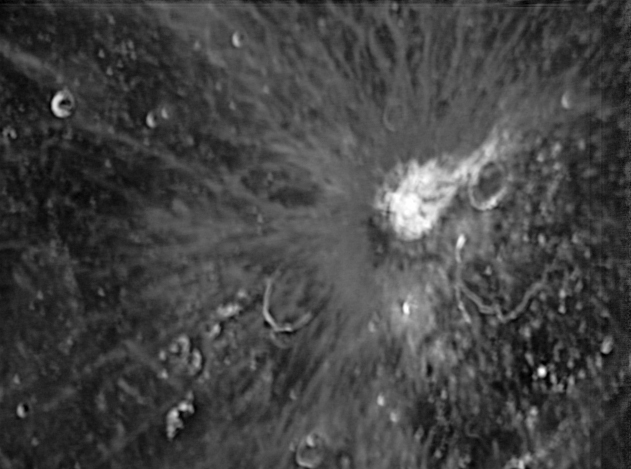
Combination of 2000, 0.002 second exposures.
DMK video CCD. 20" f/6.8 Dall-Kirkham cassegrain telescope with a 2x barlow lens.








